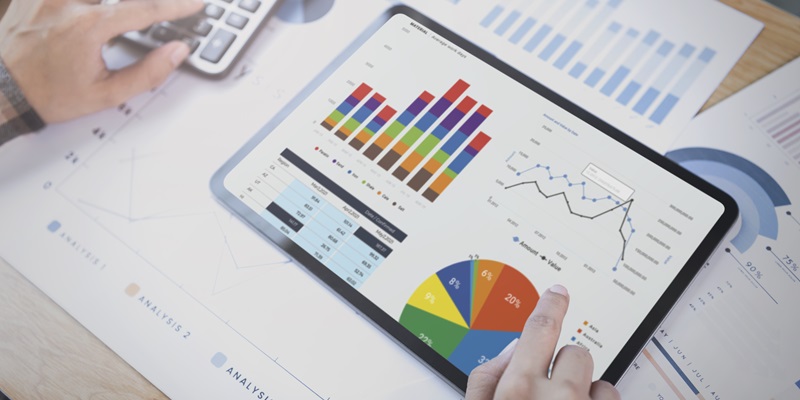The advent of AI-driven workforce analytics is revolutionizing human resource management, allowing HR professionals to transform abundant data into actionable insights that significantly enhance decision-making and strategic planning. By leveraging advanced algorithms and machine learning, organizations can gain deep insights into various workforce aspects, ranging from performance and productivity to employee engagement and turnover rates. These technologies help mitigate guesswork and biases, ensuring strategies are based on solid evidence, which drives better business outcomes.
Selecting the Appropriate Tools
Choosing the right AI tools is a fundamental step in effectively integrating AI-driven analytics into HR systems. This process entails pinpointing the AI tools that align with organizational requirements, considering features, ease of integration, and scalability. It’s essential to evaluate different platforms thoroughly to identify the ones that offer the most value. In some cases, partnering with a trustworthy AI vendor might be beneficial, providing third-party guidance and expertise in decision-making.
When selecting AI tools, organizations should consider their specific needs and goals. Different tools offer various functionalities, such as predictive analytics, natural language processing, and sentiment analysis. Understanding these capabilities helps in making an informed choice. Moreover, ease of integration with existing systems is crucial. The chosen tools should seamlessly blend with the current HR infrastructure to ensure smooth implementation and minimal disruption. Scalability is another critical factor, as the selected tools must adapt to the growing needs and expanding data volumes of the organization.
Data Handling
Proper data management is essential for leveraging the full potential of AI-driven workforce analytics. Effective data handling ensures that data is standardized, accurate, and easily reachable. This process involves harmonizing data formats and incorporating data from different sources into a centralized system. Clean and well-structured data is the foundation for generating accurate and valuable insights.
Organizations need to focus on data quality by implementing robust data governance policies. Ensuring data accuracy requires regular audits and validation processes. Integrating data from various sources, such as HR systems, employee surveys, and performance metrics, into a unified platform allows for comprehensive analysis. Additionally, establishing clear data access protocols and security measures is vital to protect sensitive employee information. Proper data management not only enhances the effectiveness of AI analytics but also builds trust among employees regarding data privacy.
Training and Adapting to Changes
Implementing AI tools in HR requires a thorough training and change management process. The success of AI-driven workforce analytics hinges on how well the HR team adapts to new technologies. Providing comprehensive training on effective tool usage is essential. This training should cover the functionalities of the AI tools, data interpretation, and how to leverage insights for strategic decision-making.
Change management is equally crucial in ensuring a smooth transition. Addressing resistance within the organization is a key aspect of this process. Employees may have concerns about job displacement or the complexity of new technologies. Open communication and involving employees in the implementation process can alleviate these concerns. Highlighting the benefits of AI-driven analytics, such as improved decision-making and enhanced employee experience, helps in gaining buy-in from the workforce. Adapting to changes requires a cultural shift, where continuous learning and embracing technology become integral parts of the organizational ethos.
Ongoing Monitoring and Enhancement
Continuous monitoring and enhancement of AI tools are imperative in maintaining their effectiveness. Regularly updating algorithms and refining data inputs ensure that AI-driven analytics deliver precise and valuable insights. Organizations need to establish a mechanism for ongoing evaluation and improvement of the AI systems.
Feedback from employees and end-users plays a crucial role in this process. Incorporating their insights helps in identifying areas for improvement and adapting the tools to better meet the organization’s needs. Regular performance reviews and audits of the AI systems are necessary to ensure they remain aligned with the evolving business objectives. Continuous monitoring also involves staying updated with the latest advancements in AI technology and integrating those innovations into the existing system. This proactive approach ensures that the organization stays ahead in the competitive landscape and derives maximum value from AI-driven workforce analytics.
Establishing a Common Language of Skills
Standardizing skill definitions across the organization is critical for effective workforce analytics. A common skills language ensures consistency and clarity in assessments, allowing for accurate skills evaluations and better alignment between employees’ capabilities and organizational needs. This consistency is essential for managing talent and planning for future requirements.
Using a skills platform facilitates this process by creating a centralized repository of skill definitions. This platform should be regularly updated to reflect new skills as they emerge. It ensures that job roles and descriptions remain relevant, bridging the gap between current capabilities and future demands. Standardized skill definitions also aid in identifying skill gaps and planning targeted upskilling or reskilling initiatives. This proactive approach equips the workforce with the necessary skills to thrive in a rapidly changing business environment.
Conclusion
The rise of AI-driven workforce analytics is transforming human resource management by enabling HR professionals to convert vast amounts of data into actionable insights that drastically improve decision-making and strategic planning. With the power of advanced algorithms and machine learning, companies can gain a comprehensive understanding of multiple workforce dimensions, such as employee performance, productivity, engagement, and turnover rates. These cutting-edge technologies reduce the reliance on guesswork and biases, ensuring that strategies are built on solid, data-backed evidence. This leads to more informed decisions that drive better business outcomes.
In addition to streamlining processes, AI-powered insights help HR teams identify patterns and trends that might otherwise go unnoticed. For instance, predictive analytics can forecast which employees are at risk of leaving, allowing management to intervene proactively. Similarly, machine learning models can pinpoint factors that contribute to high performance, enabling companies to foster these conditions across the organization. By leveraging these insights, businesses can create a more engaged, efficient, and satisfied workforce, ultimately contributing to organizational success.

